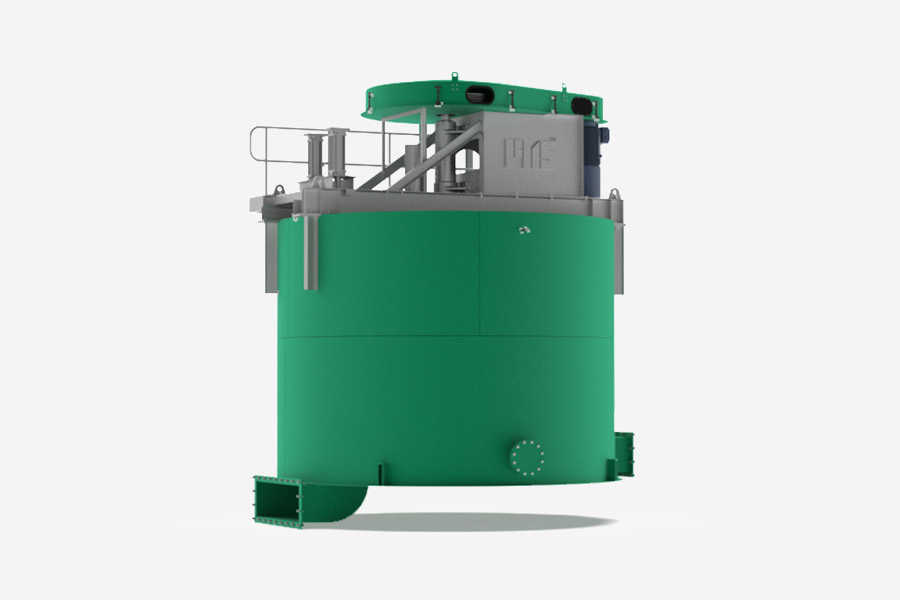

Flotation cells
Flotation is a very common method in the processing of minerals, where minerals are separated from each other based on the difference in physical-chemical properties on their surfaces. Depending on the type of mineral and its grade, the flotation operation can be done in two ways, direct and reverse.
Flotation is a step-by-step process in which minerals are separated in each step after being combined with chemicals by flotation cells.
Flotation machines
In general, flotation machines (called cells) are divided into two categories.
- Mechanical machines: This type of equipment is used through a mechanical stirrer to stir the pulp and suspend the particles. Most of the flotation machines are of this type.
- Pneumatic machines: this type of equipment does not have a mechanical stirrer and uses air power and a gaseous bed of particles to suspend the particles.
The most common model of flotation cells at present is the mechanical type.
Mechanical flotation machines
Depending on the type of agitator system and geometric shapes (cubic or cylindrical), flotation machines are divided into several categories. The selection of the dimensions and geometric shape of this equipment depends on the operation stage and the volume of incoming pulp.
Cylindrical
-WEMCO
-DORR-OLIVER
-Xcell
-KYF
Cubic
-Denver
-Sala

Application of Flotation machines
Gold flotation
Phosphate flotation
Lead and zinc flotation
Flotation of copper sulphide minerals
Aluminum flotation
Potash flotation
Flotation to remove iron wastes
Application of flotation machines in mineral processing industry
Flotation machines are widely used in flotation circuits of mineral processing industries. The volume and shape of the flotation cells are selected according to the separation stage. In general, there are three operating steps in the flotation process, which include the rougher, cleaner and scavenger steps. Flotation cells are used in both series and parallel ways, depending on the operating conditions and the purpose of the process.


- Rougher stage: In this stage, the purpose of flotation is high recovery process, and the grade is not important. Due to the high volume of minerals (pulp) in this stage, high volume cells (250, 15, 50, 130, 160) are used.
- Cleaner stage: In this stage, the purpose of the flotation process is to increase the grade, due to the low volume of the material, cells with a smaller volume (15, 3, 11) and a smaller number are used compared to the rougher stage. In other words, it can be said that the concentrate of the rougher stage is considered as the feed of the cleaner stage.
- Scavenger: At this stage, the goal of the process is to achieve the highest recovery. In this part, there is a relatively high volume of pulp that must be removed; It is worth mentioning that usually the waste from the rougher or cleaner stage is directed to this section.
The technology of making flotation machines has been exclusive to countries such as Australia, Germany, US and some European countries until the past few years, and in order to localize this technology, FMS started the project of making flotation cells in 2013. Currently FMS has succeeded in designing and commissioning 50 cubic meter and 160 cubic meter cells of WEMCO type.
It should be mentioned that this company has succeeded in designing and as a result building cells of 10 and 50 cubic meters type DORR-OLIVER as well as cubic cells of 3.3, 9 and 11 cubic meters. The above picture shows an image of a WEMCO flotation cell of the Smart cell type, which was designed and commissioned by FMS.
